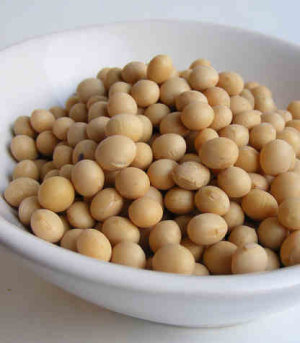There is a lot of controversy around the pros and cons of consuming soy products.
In this day and age the distorted and exaggerated messages from media and advertising make it hard to decide what is true and what is not.
One study around the side effects of soy consumption concluded that soy products reduce the risk of breast cancer. The study was conducted on the diet of a group of Asian women with one obvious discrepancy; Asian women’s soy diets are hugely different to Westerners’ soy diets. Many popular Asian cuisine’s incorporate products such as miso soup, tempeh and naturally brewed soy sauce, which are all ‘fermented’ soy products. Fermenting soy acts to break down the phytoestrogens and mineral blockers. In contrast, the most common Western soy products (99%) sold at major grocery retailers are soy milks and processed foods that have not been fermented.
So let’s go back to basics and have a look at how the soy beans that we consume are grown and sourced. Food Standards Australia New Zealand (FSANZ) allows manufacturers to use a large range of GM food ingredients imported from overseas. Soybeans, corn, rice and potatoes are among these. Genetically Modified foods are those which have had foreign genes (genes from other plants or animals) inserted into their genetic codes for the purpose of improving crop yield. This may be for the purpose of producing drought and disease resistance plants or even just to produce tastier and more attractive looking crops. (see links to GM studies below).
Food Standards Australia New Zealand (FSANZ) acknowledges that GM soybean products are used as ingredients in many processed foods, such as bread, chocolates, margarine and mayonnaise. Soy lecithin (additive 322) is used as an emulsifier in various spreads, cakes and confectionery. Soybean meal is even often used in stockfeed for pigs and poultry and in supplements for dairy cattle. (More reason to stick with home made almond milk!) On top of this, GM labelling laws in Australia allow companies to include up to one percent of GM organisms in food without labelling it GM! They are allowed to claim it got there “unintentionally” or by accident.
Unfermented soy consists of phytates (labeled as society’s ‘anti-nutrient’). Phytic acid can bind minerals in the gut before they are absorbed, causing an upset of digestive enzymes. Specifically, phytates have been proven to obstruct absorption of protein and four key minerals: calcium, magnesium, iron, and zinc. Phytates also reduce the digestibility of starches, proteins, and fats.
Another serious area of concern of soy is the high level of phytoestrogens, a class of plant chemicals that resemble estrogen. Isoflavones are the particular variety of phytoestrogens found in soy (in a very high potency), which bind to estrogen receptors, disrupting the endocrine systems normal production of hormones.
Scientists have found that high levels of isoflavones can lower gonadal development and sperm count in men as well as extensive reproductive problems in women. In fact, fertility rates have declined so much in the past 50 years since the introduction of extensive soy products (the Australian Food and Grocery Council estimates that soy is in about 50 per cent of food products – and rising) that infertility is predicted to become an urgent public health issue.
From thyroid dysfunction to infertility, the list goes on. There are many side effects of the consumption of unfermented soy that have been heavily researched and documented.
Overall we can say that yes, fermented soy is a great source of vitamin K2 and K2 (combined with vitamin D) which may help prevent osteoporosis, cardiovascular disease, dementia, and types of cancer. However, there are many undeniable dangers of soy to consider. Before you consume a soy product, make sure you consider these important questions:
• Has this soy been highly processed?
• Has this soy product been genetically modified?
• Is this soy unfermented?
• What is the healthy alternative for this soy product? (e.g. an organic and fermented version OR perhaps replace soy milk with fresh nut milk!)
The fact of the matter is that we should all aim to avoid processed and genetically modified food products wherever possible. Whether you are an advocate of soy or a cynic, do lots of research, be objective and be ultimately be healthy!
Stay rawsome!
PS. If you have had a good, bad or ugly story with Soy we would love to hear from you! Simply post your comments below on how you felt consuming soy products, or if you have had any health related issues from consuming soy.
Read more about GM food and studies:
GM Food Information
//www.globalresearch.ca/potential-health-hazards-of-genetically-engineered-foods/8148
//www.bodyandsoul.com.au/nutrition/nutrition+tips/is+soy+good+for+your,8169
//www.foodrevolution.org/blog/former-pro-gmo-scientist/
//www.responsibletechnology.org/gmo-dangers
//e.hormone.tulane.edu/learning/phytoestrogens.html
//www.sbs.com.au/news/article/2012/11/15/factbox-gm-foods-australia



